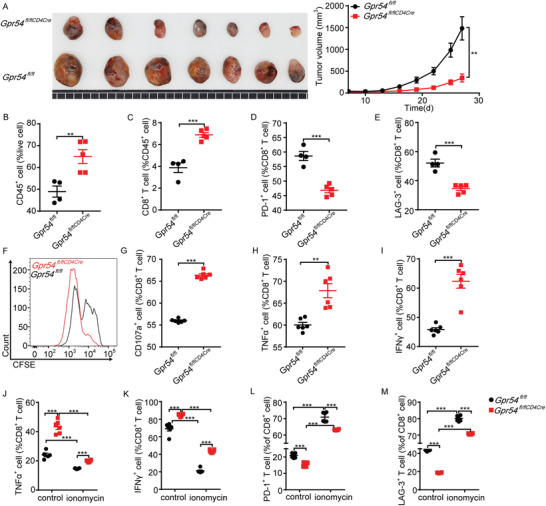Figure 5.

GPR54 T cell conditional knockout impairs LLC tumor development and decreases CD8+ T cell exhaustion. Gpr54 fl/fl and Gpr54 fl/flCD4Cre mice were implanted with 106 LLC tumor cells by a subcutaneous injection. The LLC tumor growth curves and the end‐point tumor sizes were represented A) (n = 7). FCM analysis of the proportions of B) intratumoral CD45+, C) CD8+, D) PD‐1+ CD8+, and E) LAG‐3+ CD8+ cell populations at end‐point (n = 4–5). Gpr54 fl/fl and Gpr54 fl/flCD4Cre mouse splenic CD8+ T cells activated with α‐CD3 (5 µg)/α‐CD28 (2 µg) for 72 h, and F) proliferation measured by CFSE. G) Degranulation detected with CD107a and PMA/ionomycin plus protein transport inhibitor for 3 h. CD8+ T cell with PMA/ionomycin plus protein transport inhibitor for 4 h, H) TNFα and I) IFNγ release detected by FCM. CD8+ T cell treated with ionomycin for 16 h, then α‐CD3/α‐CD28 for 24 h, J) TNFα and K) IFNγ release (n = 6) measured by FCM. CD8+ T cell with ionomycin for 16 h, then L) FCM detected PD‐1 and M) LAG‐3 expression levels (n = 6). All data are from at least three independent experiments. Data are represented as the mean ± SEM. *P < 0.05, **P < 0.01, ***P < 0.001 by an unpaired Student's t‐ test (A–E, G–I) or one‐way ANOVA followed by LSD analysis (J–M).
